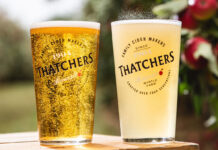Diversity of styles now available means there’s no shortage of possible pairings

DIVERSE is something of an understatement when it comes to describing the range of wines available to the Scottish trade.
From the emergence of lesser-known grape varieties to wines from ‘new, new world’ countries, the sheer scale of styles available from merchants and suppliers means there’s something to suit all types of outlet and a broad range of consumer tastes.
With so many options to choose from, when it comes to pairing wine with food, it seems the possibilities are endless. And wine suppliers contacted by SLTN last week said operators who pair wines with dishes on their menus stand to reap the benefits – enhancing both sales and the reputation of their outlet.
But with so many possibilities, where should licensees start?
According to Toby Sigouin, wine buyer at Inverarity Morton, there are some basic principles to keep in mind when matching wines with food, but the rules are “not hard and fast”.
“For instance, the aromatic off-dry wines of Alsace do work exceptionally well with Thai cuisine, and a rustic Malbec from Cahors in south west France is a winning combination with richly-flavoured slow-cooked beef cuts,” said Sigouin.
“But generally it is better to think about the flavour profile of the dish and match it to a similar flavour profile of wine, or a flavour profile of wine that can complement a dish, such as fish and chips with a really dry and zingy German Riesling.”
Paul O’Donoghue, sales training manager at Enotria, also advised operators to consider the ingredients and most prevalent flavours in a dish when making a match with wine.
“The weight of a dish and the weight of the wine that is recommended can often be a fantastic place to start,” he said. “Robust, structured wines may all too often overpower delicate dishes and vice versa.
“Although there are wines and foods that may not seem like obvious bedfellows, we should not be governed by rules and must remember that we all taste differently.
“That said, there are tried and tested combinations that the vast majority of people find work in perfect unison; bone dry Premier Cru Chablis and more delicate river fish dishes with creamy sauces can often combine perfectly – the bracing acidity of the Chablis cutting through the fattiness of the sauce.”
Similar advice was issued by Jason Bailie, head of sales for Scotland at Bibendum, who said matching wine and food can “add an extra dimension to a meal”.
“But there are no hard and fast rules,” he said.
“The best guidelines on food and wine matching emphasise matching weight, intensity and acidity.
“A rich braised red meat dish will need a powerful wine to stand up to the flavours; likewise, a delicate seafood dish will need a much lighter, fresher wine.
“The general idea is simply not to let the food dominate the wine or vice versa. If in doubt, ‘local food goes with local wine’ is a good rule of thumb. Think of Chianti with a big bowl of Tuscan pasta or a dry Fino sherry with tapas.”
Louise Boddington, wine buyer at Crown Cellars – the wine and spirits division of Carlsberg UK, also recommended matching wines with dishes from the same area.
“A safe bet is to pair wines with food from the local cuisine as they will have evolved alongside each other,” she said. “Many wine styles were traditionally made to partner local dishes and offer the right balance of flavour and structure to complement the food rather than clash with it.
“Generally, the heavier or richer the dish, the more fuller-flavoured the wine should be.”
Paul Graham, general manager at Alexander Wines, advised considering the flavour intensity of the food when making a match, claiming the best food and wine pairings are those that “balance the intensity of both the food and wine”.
“Consider the main food element of a dish, but also how it has been cooked,” he said.
“The cooking method can also have an influence on which wine may be chosen as an accompaniment. For example, if the food has been gently steamed it would require a lightly-flavoured wine, whereas if the food has been barbecued or roasted it would probably need a more robust choice.”
For all that there is a plethora of possible wine and food pairings, consumers often stick with what they know, meaning operators and their staff have to work hard to encourage them to try something new.
It’s for this reason suppliers say staff training is so important.
“People tend to play safe, which is where knowledgeable and engaging staff come in,” said a spokesman for Wine Importers.
“They may help to recommend something outwith the diner’s comfort zone, like our new Macedonian range from Stobi with Vranec as a grape variety. The public will most often order the drink they enjoy rather than looking to pair the best option with their food and that’s where a bit of ‘gentle’ guidance helps.”
Freya Reinsch, area sales manager at Alliance Wine, underlined the importance of highlighting possible pairings.
“Featuring wines beside dishes on a menu is great because it builds awareness of food and wine as two parts of a complete experience, and getting people to think habitually of food and wine as partners is an ongoing effort,” said Reinsch.
“But don’t let the menu and wine list do the entire job or imply that there is only one wine choice for a dish.
“It’s a starting point, and good service should expand on what the menu suggests.”























